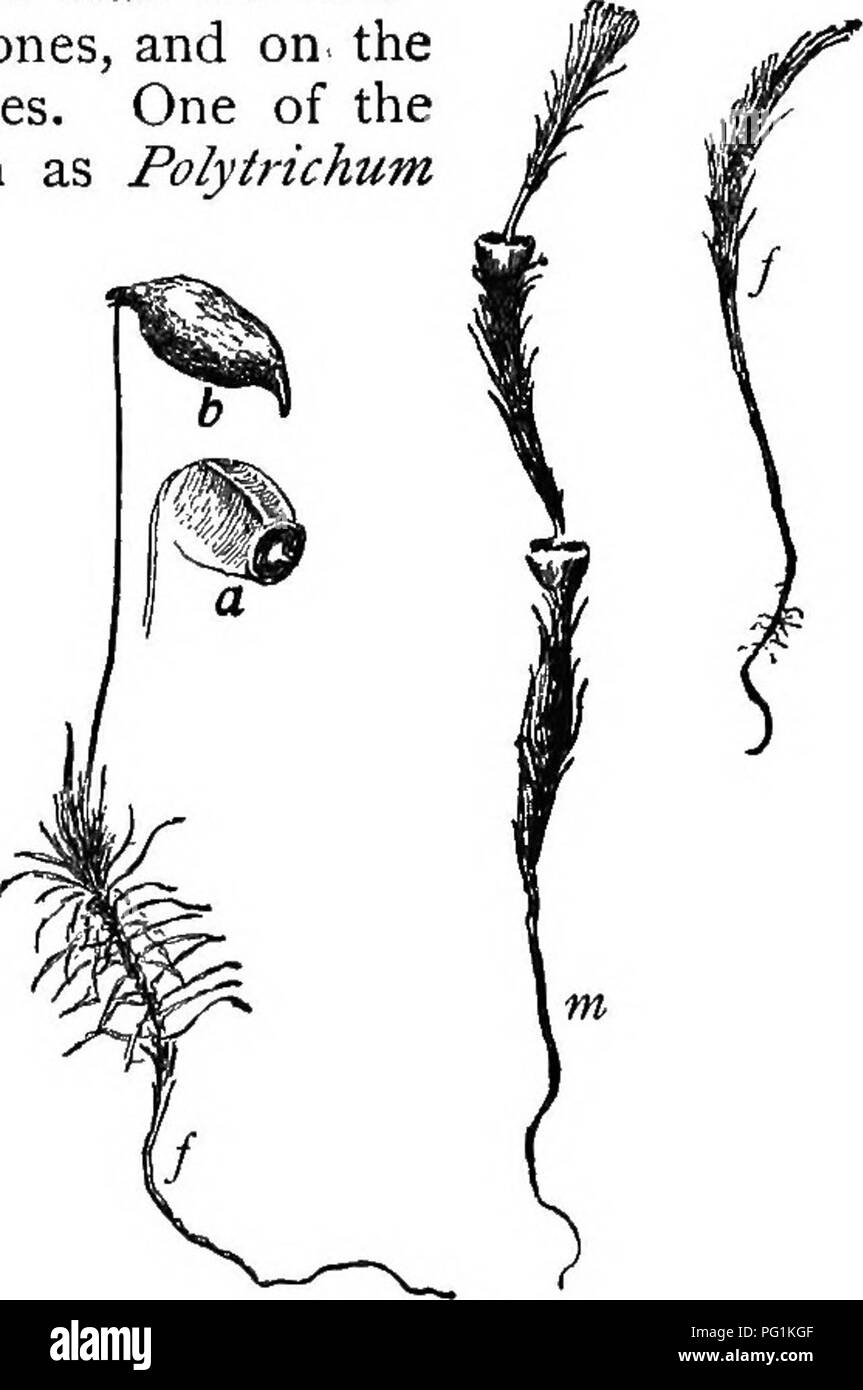. Beginners' botany. Botany. STUDIES IN CRYPTOGAMS 199 Mosses (Bryophyta) If we have followed carefully the development of marchantia, the study of one of the mosses will be comparatively easy. The mosses are more familiar plants than the liver- worts. They grow on trees, stones, and on. the soil both in wet and dry places. One of the common larger mosses, known as Polytrichum co7}imune, may serve as an example. Fig. 295. This plant grows on rather dry knolls, mostly in the borders of open woods, where it forms large beds. In dry weather these beds have a reddish brown appearance, but when moi

Image details
Contributor:
Central Historic Books / Alamy Stock PhotoImage ID:
PG1KGFFile size:
7.1 MB (184.4 KB Compressed download)Releases:
Model - no | Property - noDo I need a release?Dimensions:
1288 x 1939 px | 21.8 x 32.8 cm | 8.6 x 12.9 inches | 150dpiMore information:
This image is a public domain image, which means either that copyright has expired in the image or the copyright holder has waived their copyright. Alamy charges you a fee for access to the high resolution copy of the image.
This image could have imperfections as it’s either historical or reportage.
. Beginners' botany. Botany. STUDIES IN CRYPTOGAMS 199 Mosses (Bryophyta) If we have followed carefully the development of marchantia, the study of one of the mosses will be comparatively easy. The mosses are more familiar plants than the liver- worts. They grow on trees, stones, and on. the soil both in wet and dry places. One of the common larger mosses, known as Polytrichum co7}imune, may serve as an example. Fig. 295. This plant grows on rather dry knolls, mostly in the borders of open woods, where it forms large beds. In dry weather these beds have a reddish brown appearance, but when moist they form beautiful green cushions. This color is due, in the first instance, to the color of the old stems and leaves, and, in the second in- stance, to the peculiar action of the green living leaves under the influence of chang- ing moisture-conditions. The inner or upper surface of the leaf is covered with thin, lon- gitudinal ridges of delicate cells which contain chloro- phyll. These cells are shown in cross-section in Fig. 296, as dots or granules. All the other tissue of the leaf consists of thick-walled, corky cells which do. Fig. 295. — Polytrichum commune. _/", /", fertile plants, one on the left in fruit; ;», antheridial plant.. Please note that these images are extracted from scanned page images that may have been digitally enhanced for readability - coloration and appearance of these illustrations may not perfectly resemble the original work.. Bailey, L. H. (Liberty Hyde), 1858-1954. New York, The Macmillan company